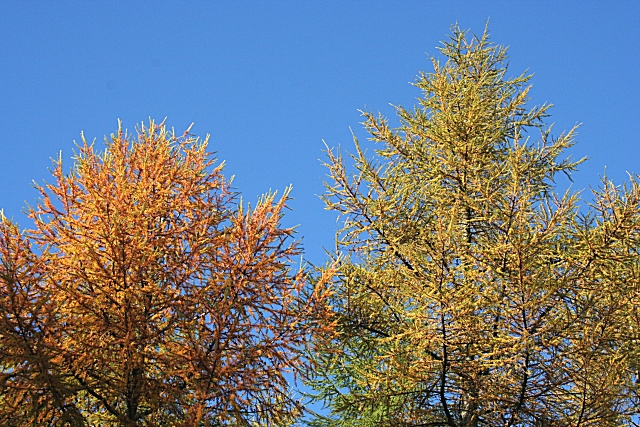A killer tree disease has spread to Scotland’s main timber crop, sikta spruce, raising fears for the environment and the £1 billion forestry industry.
The government’s Forestry Commission Scotland (FCS) has told The Ferret that the fungal pathogen, phytophthora ramorum, has recently been discovered in sitka trees in two parts of south west Scotland.
The disease, which rots needles, wilts shoots and damages bark, has already caused the death or felling of thousands of larch trees in the region. According to FCS, it has caused “significant collateral damage” to wildlife and heathland, as well as altering the landscape.
Now the disease has been detected in a group of sitka trees in Galloway and in one tree near Ae, a village north of Dumfries. The commission has felled the trees, boosted monitoring and launched research “to help confirm the level of risk”.
FCS says that previous evidence suggests that sitka has a “low susceptibility” to the disease so the problem should be containable. But environmental groups are concerned that this could change.
Duncan Orr-Ewing, head of species and land management for the Royal Society for the Protection of Birds (RSPB) in Scotland said: “We are sure that FCS will be extremely concerned about any increased virulence of this disease in sitka spruce, which could be exacerbated by climate change.”
RSPB pointed out that blaeberry was highly susceptible to ramorum, and was a vital source of food for endangered capercaillie. “The best way to mitigate against tree diseases is to move away from monocultures of commercial tree crops, including sitka spruce, towards more diversity of especially native tree species,” argued Orr-Ewing.
Woodland Trust Scotland stressed the need for vigilance. “Mix up diseases and incoming pests with our changing climate and it becomes very difficult to predict the outcome,” warned the trust’s George Anderson.
“Something could sit benign for years and suddenly find its moment to take off.”
He pointed out that the disease had shown a “worrying” ability to switch host plants, and had earned the name “sudden oak death” in the US. It had been imported from abroad, he said, showing how important it was that new trees were all sourced from within the UK.
The industry group, Confor, which represents 1,500 forestry and wood businesses in the UK, pointed out that sitka was the industry’s “mainstay” in Scotland. The industry was worth £1 billion annually to the economy and supported more than 25,000 jobs.
“We take this news very seriously and are working closely with Forestry Commission Scotland,” said Confor chief executive, Stuart Goodall.
He took comfort, however, in sitka’s “historic resilience” to diseases. “We are reassured by past experience – and by the positive view of forest research experts – that the impact is very likely to be localised and minimal, due to sitka’s natural resistance.”
FCS promised to keep investigating the new outbreak. “We have initiated additional surveillance, but early indications and previous experience suggest that the impact on sitka spruce is likely to be minimal,” said an FSC spokesman.
“Scientific evidence shows that sitka spruce is considered to be of very low susceptibility to ramorum and no negative impacts have been observed on the large areas of sitka spruce adjacent to infected stands of larch in south west Scotland.”
He pointed out that the disease had been found in sitka before. “There have been a number of historical findings, none of which have shown signs of disease expansion in adjacent spruce crops.”
Ramorum was first detected in the UK in the tree nursery trade in 2002. Larch trees on the Craignish peninsula in Argyll were found to be infected in November 2010.
It quickly spread, causing FCS to set up an emergency “management zone” covering most of Dumfries and Galloway in 2014. The disease has affected 5,000 to 6,000 hectares of woodland in the area, half of which has been felled.
“Eradication of ramorum on larch in Scotland is no longer achievable,” says FCS.
The Scottish Government stressed that monitoring tree health issues was key to its ambitions for forestry. “That’s why once we have completed devolution of forestry, we will maintain local offices and continue to invest in keeping essential skills and expertise on the ground,” said a spokesperson.
Tree diseases on the rampage
Dutch elm disease: killed at least 25 million of the UK’s 30 million elm trees between the 1960s and the 1990s.
Chalara dieback: threatening to kill many of Scotland’s ash trees in the next few years
Red band needle blight: weakening and killing Scots pine, lodgepole pine and Corsican pine
Acute oak decline: affecting several thousand oak trees in England
Sweet chestnut blight: outbreaks in six areas of England in 2016 and 2017, causing emergency controls to be imposed on sweet chestnuts
Horse chestnut bleeding canker: originating in the Himalayas, infected half of UK horse chestnut trees
Sirococcus tsugae: a fungus that attacked cedar and hemlock trees in 2014 and 2015
Phytophthora alni: caused the death of thousands of alder trees across the UK
source: Forestry Commission
Photo thanks to Anne Burgess, licensed for reuse under this Creative Commons Licence. A version of this story was published in the Sunday Herald on 18 March 2018.














